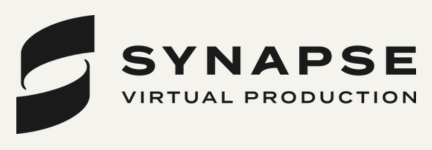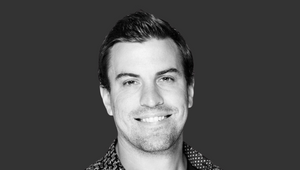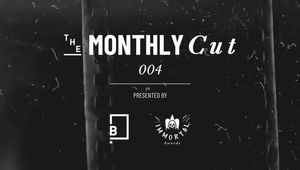
A Glance at Production in 2025: What the Industry Expects

After a turbulent 2024, the production industry finds itself at a juncture. The aftershocks of the 2023 Hollywood strikes linger, streamers have tightened their belts, and the battle between independent production houses and holding companies continues to evolve. Meanwhile, the demand for content has never been greater, on all fronts – yet budgets remain static. As we enter 2025, the questions are manifold, but have one jumping point: How does production maintain creative excellence while navigating constraints?
AI: A Needed Co-Pilot or a Fad?
Artificial intelligence is making waves through the industry, offering speed, efficiency, and personalisation at an unprecedented scale, whether you like it or not. Yet, while AI unlocks new possibilities, it also raises fundamental questions about creativity, authenticity, sustainability and ethics.
"The world of AI will open up even more for us next year, offering nearly unlimited possibilities," says Alexander Nagel, managing partner of Serviceplan Make. "For me, the key question becomes what we truly want to create – and why. AI provides tools to work faster, more efficiently, and with greater personalisation. But without clear intention and strategy, we risk becoming interchangeable in the flood of content."
Many in the industry share this sentiment, emphasizing that while AI can enhance workflows, human storytelling remains irreplaceable. Phil Medway, executive producer at Gusto Film agrees, highlighting AI’s role in production: "AI has already shown it can speed up tasks in editing, VFX, and even scriptwriting. As it becomes more deeply woven into workflows, it will help cut costs and save time. The real challenge will be using it without losing the authentic, human touch audiences connect with."
"I think it’s no surprise, but an area we will keep in focus is AI," confirms Adrienn Major, Founder at POD LDN. "At POD the priority for us would be on how we can improve productivity for our clients and be more efficient. Everyone is extremely cost sensitive at the moment and finding those smart solutions is more important than ever."
"I think it’s no surprise, but an area we will keep in focus is AI," confirms Adrienn Major, Founder at POD LDN. "At POD the priority for us would be on how we can improve productivity for our clients and be more efficient. Everyone is extremely cost sensitive at the moment and finding those smart solutions is more important than ever."
Cutting costs and saving time is all great, but with the industry previously committed to sustainable practices, we can’t help but wonder if those are achievable while using artificial intelligence throughout the campaign creation and output.
Virtual Production and Sustainability
Virtual production is continuously gaining traction too, as a cost-effective but environmentally conscious alternative to traditional shoots. With sustainability high on the agenda for both brands and audiences, virtual production presents a greener way forward.
"Virtual production is still shaking up how we tell stories, bringing a ton of creative freedom to the table," continues Phil. "It’s also becoming a go-to for greener, more sustainable production methods. With sustainability front and centre, this is one trend that’s only going to grow."
The evolution of production workflows is something Antoine Moulineau, CEO and VFX Supervisor at LIGHT, has experienced firsthand: "The growing demand for fast turnarounds and cost-effective solutions, particularly for platforms like TikTok or Instagram, will drive a surge in web-based content creation. To meet these evolving needs, leveraging AI-powered tools and workflows will become essential."
Adapting to the New Production Landscape
The industry’s shifting sands have already forced production companies to rethink their business models. As some long-established houses struggle, agile newcomers are proving that adaptability is key.
"We’ve recently seen some long-established production houses struggle to survive, with several even closing their doors," says Medway. "At the same time, new, more agile production outfits are rising to meet the demand for faster, more diverse, and often smaller-scale content. These newcomers are proving that success comes down to embracing new ways of working, leveraging new tech, and understanding the needs of a multi-platform world."
This opinion is echoed by Sevasti Buford, executive producer at JOJX, who sees social media as a driving force for emerging talent: "When I started out in the industry, many directors honed their craft in documentaries and music videos. Today, social media has become the new proving ground for emerging talent. With brands ranging from luxury to up-and-coming markets investing in social, there’s room to push boundaries and innovate."
However, while digital platforms provide opportunities, there are concerns about the erosion of established support systems. Sevasti laments the loss of Free the Work: "Diversity remains a critical priority, especially after the loss of platforms like Free the Work, which was a significant blow to the industry. Many relied on it for visibility and to spark vital conversations. In its absence, we’re committed to championing inclusion and visibility, ensuring these values remain central as we move forward.
Nearshoring is another trend that continues to shape the industry, or is shaped by the changes within the industry. "More and more companies are looking at setting up hubs outside of the UK to battle with National Insurance raises and rising costs," says Adrienn Major. "The Balkans, Hungary and Poland are some of the countries where brands and agencies are choosing to set up, and we’ve seen the likes of BP, Pepsico and HP already do so as well as the likes of Publicis. The world is more connected than ever and most companies can find efficiencies in choosing to do at least part of their work there. Cultural differences can however be a challenge. To help bridge over these differences, our workaround at POD is that we have a local team liaising with expert executive producers who have built their careers in the UK."
Nearshoring is another trend that continues to shape the industry, or is shaped by the changes within the industry. "More and more companies are looking at setting up hubs outside of the UK to battle with National Insurance raises and rising costs," says Adrienn Major. "The Balkans, Hungary and Poland are some of the countries where brands and agencies are choosing to set up, and we’ve seen the likes of BP, Pepsico and HP already do so as well as the likes of Publicis. The world is more connected than ever and most companies can find efficiencies in choosing to do at least part of their work there. Cultural differences can however be a challenge. To help bridge over these differences, our workaround at POD is that we have a local team liaising with expert executive producers who have built their careers in the UK."
Looking Forward: A Return to Craft and Collaboration?
Despite the disruptions, industry leaders seem generally optimistic about a renewed focus on craft and creative confidence. BBH’s chief production officer, Stephen Ledger-Lomas, reflects on the past year: “At times, 2024 felt like tectonic plates were shifting in commercial production. There was a lot of talk about the impact generative AI would have, both in terms of workflows and jobs. But I think we could have been talking more about creativity and what has been cautiously regarded by many as a return to craft and quality.”
Stephen remains hopeful for the future: “Start-ups in agencies, production companies, post-production, and beyond are now resurgent and will raise everyone’s level. Don’t blame budgets on each other – digital channels are here to stay, and there is enough work for everyone. We just need to be more collaborative and entrepreneurial than ever before.”
Hijinks’ head of production, Anita Sasdy, shares this enthusiasm: “Last year has been a tricky year for all in the production industry. But I'm confident that 2025 is already starting to look better. We just need to embrace updated technologies, new ways of working, and be more open-minded to creating new forms of content.” After all, challenges are always opportunities in disguise.
"It’s our job to align our creative with the values and thinking of our clients," says Hope Harris, founder of TillSow. "Modern brands and boutique agencies will continue to become more integrated in both creative and production, as they must operate multidisciplinary by nature. Our hope in 2025 is that brands will further embrace this new way of working by championing big ideas with companies like ours."
And, big ideas are still very much the focus. With rapid and consistent change in how we create content, where it lives, and the cadence at which we consume it, adaptability is key. We must interpret big ideas and shape them for different spaces, formats, and platforms in an ever-evolving landscape. In 2025, the value will lie in creative partnerships grounded in trust, transparency, and a shared vision. Smaller shops have the ability to work intimately with brands in ways that develop a highly flexible, cohesive, and efficient workflow.
A renewed sense of community within the industry is favoured, and actually necessary, and there are actors that are doing everything they can to push for this too. As the APA’s Steve Davies puts it, “The APA is going to move heaven and earth toward our goal of making 2025 a much better year for our members. We can’t guarantee the result, but we can promise to give it everything.”
This year is already shaping up to be another transformative one for the production industry, both at home and globally. The balancing act between technological advancements and human creativity will be critical, but don’t forget, the climate clock is still ticking still. Those who embrace smart innovation while staying true to the core of what this industry is about – storytelling and craftsmanship – seem to be the ones who will thrive in a world of record-high dopamine levels.















